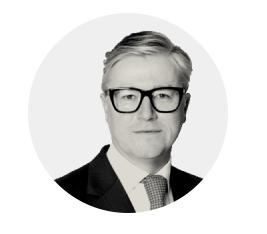How do you contrast between picking companies and picking industries?
The one is integral to the other. The obvious latch points are the companies but we always need to understand their environments. We own VISA and therefore it is necessary to have a view on the whole marketplace including MasterCard and to an extent American Express. The big tide here is the shift from credit to debit and how the rising mix of e-commerce is pulling returns up. The big existential risk is that a platform such as Alipay gains access and related technologies undermines the incumbents.
Semiconductors is an example of an industry where competition has been winnowed down by virtue of the increasing capital costs of capex and R&D to compete at the cutting edge. In 2000, 28 companies were capable of producing chips with the most advanced technology. Today that number is 3. We own Samsung and TSMC within the portfolio. The relentless ratchet in spending requirements is well illustrated by the cost to purchase the newest photolithography machines for EUV from ASML. These cost some 4x the prior generation. The next phase machines will cost 2x this again. The extremity of the technological frontier in semiconductors has caused a natural vertical formation of symbiotic oligopolies/monopolies. ASML, also in the portfolio, is the sole supplier of EUV equipment for the world’s foundries. It has achieved this position through 20 years of counter consensus R&D. Its position will not be swiftly assailed.
Can you run through your watch list and the process there?
There are 27 companies in the portfolio presently and 8 companies on the watch list. We graduate 3 or 4 or 5 companies onto the watch list every year and of course companies can come off the watch list having not made it into the portfolio as we watch the fundamentals of these quite carefully.
What about your wider universe?
The initial screening work reduces the total global universe down to between 500-550 companies and I think our true addressable universe is between 200 and 250 companies worldwide.
How to operate coverage within the team?
We share notional coverage between 5 of us but we swap companies around randomly each year. Not the whole coverage list but part of it. This is to prevent ownership and stale thinking. We see the benefits of addressing different business models in different sectors and actively work against any sector specialisation.
Can you explain how you weight companies?
It is an equal weight process which is designed to counter the behavioural trap where the manager buys more of the company that is performing the best in some feedback loop. This should have the effect of transitioning more value to the fundamental research process and away from any mercurial skill that I may or may not possess. It means that the team is incentivised in its work for when a position is added, it gets to full weight quite quickly. There are no half positions or experimental positions. We rebalance when a company weight (relative to the rest of the portfolio) drifts 20% up or down from target weight. We tested various levels and this one works well as its not too sensitive and the beta effect in markets means that we are not adjusting that often.
What is your sell discipline? Examples?
It is the opposite of the buy discipline. If a company is in danger of failing one of the seven fundamental factors that we consider then it will be placed on review. Whilst it is on review the company will be discussed at our weekly Investment Meeting until a decision is made: to retain or sell. In 2016 we sold Novo Nordisk. The original thesis was based on its market position in a highly concentrated industry with just 3 key players. It has superior margins but ultimately we couldn’t convince ourselves that that margin was sustainable. Bio-insulin is not a complex compound and Novo’s edge in drug delivery could be crimped by developments in other companies. Swiss hearing aid manufacturer, Sonova, was sold early this year on concerns that the drive to bring down costs in some medical lower risk areas would result in a merging of products between consumer earphones and hearing aids. We spotted the fact that Bose has ambitions in the sector and the drift of US Government policy is to liberalise. Ultimately, this was a long run industry call.
At what point do companies become too expensive for the portfolio?
We follow a Growth At a Reasonable Price Methodology (GARP) so we are playing off growth against price. We also think about the sustainability of returns and their longevity. Confidence about that is engendered from observations about industry structure and competitive edge. That said, we do allow some rope on valuations and I personally follow the Rumsfeld doctrine as translated to valuations. That is, we invest in companies for what we know about them, we also invest for the positive optionality of what the management know but we do not and the further prospects for developments that even the managements have not thought of. That why long term investment is better than short term investment.
You only have one UK company in the portfolio. Would you like it to be more?
We own Renishaw, yes. The UK is somewhat of a conundrum. It is, in our minds, one of the 10-15 countries of the world that will continue to have an edge in IP creation and protection, but has few companies that have achieved global leader status in the past 30 years.
Are we approaching the end of Moore’s Law and what’s the future of these semiconductor companies?
In a certain sense, Moore’s Law is a false construct as it is not a law per se. The idea became so prevalent that the capex in the industry was geared to make Moore’s Law true. Perhaps we have a further 10 years of going to progressively finer geometries but we don’t believe the cost of leading edge chips will decline as fast as they did in the past. There are also things to be done with chip architecture and geometries that may be as consequential as the simple sizing of micro-chips. We don’t presently see how Quantum Computing has a role outside very large scale facilities or labs given the fact that it has to operate at absolute zero.
Explain what hybrid cloud is?
Enterprises or technologies that use a mixture of local sourced data and cloud data. Experian, for example, began its cloud migration 10 years ago and it continues. Public cloud involves workloads running through a central infrastructure, which improves efficiency, scalability and security over legacy on premise servers. However, for many established corporates the associated costs of recoding systems renders a full transfer impractical. Hybrid cloud stitches together the legacy on premise systems with the public cloud system to create a seamless environment. Hybrid is likely to be the dominant IT paradigm in the medium term. Only Microsoft, of the large cloud vendors, is capable of providing hybrid cloud due to its historical server business. This position also places Microsoft in pole position to provide ‘edge’ computing to AI applications like autonomous cars, which require a decentralised compute capability. Microsoft is a holding in Global Leaders.
How do you judge management integrity, where in many cases issues become known only in hindsight (e.g. Boeing)?
Boeing is not an invested company but you are right to point out this risk. We look at corporate culture and how senior management is groomed but it not possible to isolate the risks entirely. We are dealing with humans with incentive structures and power structures that pull in different directions. But, to be clear, if there were a failure in ethics, we would sell.
How do you arrive at the decision to own one company over another in the same industry? Why do you own Nestle over Unilever?
There are always factors backed up by observations that draw us to one company in a sector. We do not have a negative opinion on Unilever but we observe and expect Nestle to reformulate its portfolio with more conviction that Unilever.
Do you rotate companies in the portfolio based on economic cycles?
No. We are aware that this is a prevalent style within many portfolios but we don’t do it. What we do expect is that, every cycle, weaker players are marginalised and the forces of consolidation and concentration will make the companies we own stronger. It helps that they have better balance sheets. Many will be able to maintain dividends but in the early leg of a downturn, the portfolio – in share price terms – will look like the market for a while.
What portfolio mistakes would you say you’ve made in the past?
They can be mistakes of omission as well as commission. We did work on Microsoft five years ago and our sense was that this could be a great investment but the business at that time was just too transitional to include at that time. We own it in the portfolio now and obviously some rerating has already taken place. That said, it is always necessary to look forward and there is a lot to go for, especially as we see Microsoft being dominant in cloud computing. Industry data suggests that Microsoft are far ahead of Amazon Web Services in the corporate sector where it possesses scale advantages based on its historical market share in software.
What are the differentiating factors in your approach to global equity investing?
I think it’s a few things.
Equal weighting short circuits the loop whereby the manager keeps buying more of the best performing stock. It means that inclusion of any name is meaningful to portfolio attribution. It flattens decision making across several nodes.
We rotate coverage between us to avoid possessive behaviour and siloed thinking. It means that everybody in the team sees a high diversity in business models and management teams.
We always try to bear in mind that there are many possible futures and in some of them investment theses fail.
We try to avoid jockeying on any particular style. Style bias can descend into momentum investing.
In this respect, quality stocks (defined as investing in long term value creation) does not always need to mean high price earnings stocks.
An even stronger case can be made for arguing that growth valuations are no guarantor of long term value creation.
We do a great deal of work on balance sheets as we do not want to face business failure. The less financing risk we take, the more comfortable we can be with equity risk.
Although we don’t seek out capital intensity, we are not afraid to own capital intensive businesses. Over time they can be associated with phenomenal barriers to entry. I’d wager there are no hipsters in Hackney dreaming up a global industrial gases business.
As a consequence, we own more industrial companies than consumer companies.
On technology, we are bigger into the companies achieving dominance in the common denominators than the consumer facing companies.



